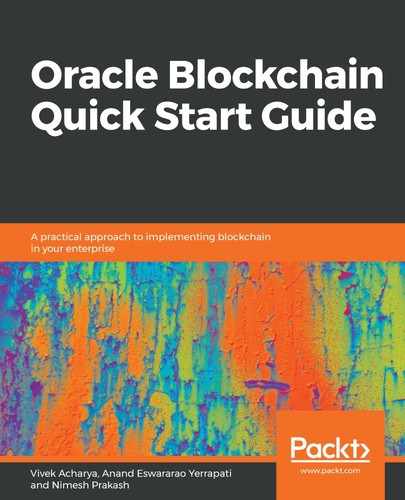The following modules, also known as tools, are hosted by Hyperledger:
- Hyperledger Caliper
- Hyperledger Cello
- Hyperledger Composer
- Hyperledger Quilt
- Hyperledger Explorer
- Hyperledger URSA
Hyperledger Caliper:
- Contributors: Oracle, Huawei, and others
- Objective: To enable the performance of specific blockchain implementations to be measured
- Key features: It allows the generation of reports with various performance indicators, such as resource utilization, transactions per second, and transaction latency
Hyperledger Cello:
- Contributors: IBM, Huawei, and others.
- Objective: To allow businesses to have Blockchain-as-a-Service (BaaS), which enables quick blockchain solutions for enterprise. It reduces complexity and minimizes the efforts required to create, terminate, and manage blockchains.
- Key features: It offers multi-tenant services in addition to various infrastructures, such as bare metal, and virtual machines. It enables the creation and management of blockchain via a simplified dashboard allowing the immediate availability of the blockchain instance.
Hyperledger Composer:
- Contributors: Contributors from IBM and Ox-chains are the maintainer community, however, everyone is encouraged to participate and contribute.
- Objective: To develop a set of collaboration tools that facilitate the easy and quick building of blockchain business networks to enable developers to quickly create chaincode and applications.
- Key features: Built using JavaScript and tools including Node.js, npm, and CLI. Its modular language facilitates asset definition, participant definition, and transaction definitions. These three components constitute the blockchain network. It allows faster and easier development of blockchain applications.
Hyperledger Quilt:
- Contributors: NTT Data and Ripple.
- Objective: It allows interoperability between ledger systems by implementing the Interledger Protocol (ILP). ILP is a payments protocol and is designed to transfer value across both distributed and non-distributed ledgers.
- Key features: It allows atomic swaps between ledgers (even non-blockchain or distributed ledgers) and a single account namespace for the accounts within each ledger.
Hyperledger Explorer:
- Contributors: IBM, DTCC, and Intel.
- Objective: It allows authorized participants to explore DLT projects. It also allows the visualization of blockchain operations, which enables enterprises to extract value from data.
- Key features: Explorer can view, invoke, deploy, or query blocks, transactions and associated data, network information (name, status, and a list of nodes), chaincodes, and transaction families, as well as any other relevant information stored on the ledger.
Hyperledger Ursa:
- Contributors : Ursa contributors include Hyperledger Indy, Sawtooth, and Fabric developers, who worked on security aspects of these modules. Also, to ensure that all cryptographic algorithms meets the standards, several cryptographers are involved.
- Key features: A modular, flexible cryptographic library that is intended for, but not limited to, use by other projects in Hyperledger.
- Objective: To ensure safe and easier access to trusted cryptographic libraries to other Hyperledger projects. Its modular library will help blockchain developers to switch or change cryptographic schemes with the aid of simple configurations.
- Language: Rust.
